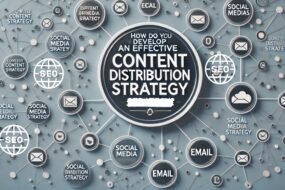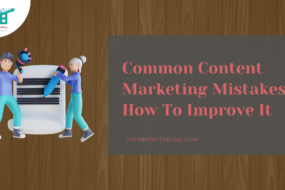
In the modern digital landscape, content creation is more important than ever. Businesses, bloggers, and marketers need fresh, engaging, and high-quality content to attract audiences. But creating content takes time, effort, and creativity. This is where generative AI steps in.
Generative AI is changing the way we produce content. It helps writers, marketers, and businesses generate ideas, draft articles, and create social media posts in a matter of minutes. But what is the primary advantage of using generative AI in content creation? Let’s explore.
What Is Generative AI?
Generative AI refers to artificial intelligence that can create new content, such as text, images, videos, and even music. Unlike traditional AI, which analyzes and processes data, generative AI produces original content based on patterns it has learned from vast amounts of information.
Some of the most well-known generative AI models include:
- ChatGPT – Creates written content, answers questions, and assists with brainstorming.
- DALL·E – Generates images from text descriptions.
- MidJourney – Produces AI-generated artwork.
- Jasper AI – Helps with marketing copy and blog writing.
These tools have made AI more accessible to content creators, marketers, and businesses. Instead of manually writing everything from scratch, users can generate drafts, outlines, and even entire articles with just a few clicks.
The Rise Of Generative AI In Content Creation
In the last few years, generative AI has become a game changer in content creation. More businesses and individuals are turning to AI-powered tools to improve productivity, reduce costs, and streamline their content strategies.
Why has AI become so popular in content creation?
- Technological Advancements – AI tools have improved significantly, making them more accurate and human-like.
- High Demand for Content – Businesses need fresh and engaging content regularly, and AI makes this process easier.
- Increased Competition – Companies need to produce content faster than competitors to stay relevant.
- Ease of Use – AI tools are becoming more user-friendly, making them accessible to people without technical skills.
As AI continues to improve, it is likely to become an even bigger part of the content creation industry.
Why Businesses Are Embracing AI-Powered Content?
Businesses of all sizes are adopting AI-powered content creation. Here are some reasons why AI is becoming an essential tool for companies:
1. Cost-Effective Solution
Hiring writers and content creators can be expensive. AI allows businesses to generate content at a fraction of the cost, making it a budget-friendly option for startups and small businesses.
2. Scalability
Companies that need a large volume of content benefit from AI because it can generate unlimited articles, social media posts, and marketing materials without extra effort.
3. Improved Engagement
AI tools analyze audience behavior and trends to create content that resonates with readers. This leads to higher engagement, more clicks, and better brand visibility.
4. Multilingual Capabilities
Many AI tools can translate and generate content in multiple languages, helping businesses expand globally without hiring translators.
5. Personalized Content
AI can tailor content based on user preferences, creating personalized marketing messages that improve customer relationships.
With these benefits, it is no surprise that companies are relying on AI to enhance their content strategies.
What Is the Primary Advantage of Using Generative AI in Content Creation?
The most important advantage of using generative AI in content creation is speed and efficiency. AI-powered tools can create content in seconds, something that would take a human writer hours or even days.
Here is why speed and efficiency matter:
- Faster Content Production: AI can generate blog posts, social media captions, and even video scripts instantly.
- Saves Time: Writers and marketers do not have to spend hours brainstorming or structuring content.
- Boosts Productivity: Teams can focus on strategy and creativity while AI handles repetitive tasks.
Imagine you need to write a 1000-word article on digital marketing trends. Instead of spending hours researching and writing, an AI tool can generate a well-structured draft within minutes. You can then refine the content, add personal insights, and publish it much faster.
Other Key Benefits of Generative AI in Content Creation
Apart from speed and efficiency, generative AI brings other advantages that make it an essential tool for modern content creators.
1. Improved Content Quality
AI helps refine content by suggesting better sentence structures, improving readability, and eliminating grammatical mistakes. This results in more polished and professional content.
2. Better Content Distribution
AI-powered tools can help businesses determine the best time to post content, which platforms to use, and how to repurpose content for different audiences.
3. Automated Editing and Proofreading
AI tools like Grammarly and Hemingway help writers identify and fix grammar, spelling, and punctuation errors, ensuring high-quality content.
4. Diverse Content Formats
AI does not just create text-based content. It can generate images, infographics, and even video scripts, allowing businesses to diversify their content strategy.
5. Data-Driven Insights
AI tools analyze user engagement and content performance, helping businesses understand what works best and make informed decisions for future content strategies.
How AI Improves Content Creation?
Generative AI is not just about speed. It improves content creation in many ways. Let’s take a look at some of them.
1. Generates Ideas Instantly
One of the hardest parts of writing is coming up with new ideas. AI can suggest topics, headlines, and even outlines based on trends and keywords. This is useful for bloggers, content marketers, and businesses looking for fresh content ideas.
2. Enhances Creativity
Some people think AI replaces creativity, but it actually helps boost it. AI-generated drafts serve as a starting point, allowing writers to refine and add their unique touch. Instead of staring at a blank screen, writers can focus on making content more engaging.
3. Helps Maintain Consistency
For businesses, maintaining a consistent brand voice is important. AI tools can be trained to follow specific guidelines, ensuring content remains uniform across platforms. This is useful for brands that post regularly on social media, blogs, and websites.
4. Optimizes Content for SEO
Search engine optimization (SEO) is key to making content visible online. AI tools can suggest keywords, improve readability, and structure content in a way that ranks better on search engines. This helps businesses reach a larger audience.
5. Reduces Writer’s Block
Every writer experiences moments when they do not know what to write. AI eliminates this problem by providing instant drafts and suggestions. Writers can edit and build upon these drafts, making the writing process smoother.
Real-Life Uses of Generative AI in Content Creation
AI is already being used by businesses, content creators, and marketers worldwide. Here are some real-life applications:
- Blog Writing: AI helps generate blog outlines, drafts, and even complete articles.
- Social Media Posts: AI creates engaging captions and posts tailored for different platforms.
- Email Marketing: AI drafts compelling email copies that encourage customer engagement.
- Product Descriptions: E-commerce brands use AI to write product descriptions quickly.
- Video Scripts: AI assists in generating video scripts for YouTube and other platforms.
Companies like HubSpot, Canva, and Jasper AI are already using AI-powered tools to enhance content creation. Even media companies use AI to generate news articles based on real-time data.
Limitations and Challenges of Generative AI
While generative AI offers many benefits, it also has some limitations and challenges that cannot be ignored.
1. AI-Generated Content vs. Human Creativity
AI can generate well-structured content, but it lacks human emotions, creativity, and personal experiences. It may struggle with storytelling, humor, or deep insights that make content truly engaging.
2. Ethical Concerns and AI Bias
AI learns from existing data, which can sometimes introduce bias. This raises ethical concerns about misinformation, stereotypes, and fairness in content creation.
3. SEO and Originality Issues
AI-generated content may not always be unique, which can impact SEO rankings. Over-reliance on AI can also lead to repetitive or low-quality content that does not add real value.
4. Dependency on Data Quality
Generative AI relies heavily on the quality of training data. If the data is outdated, biased, or inaccurate, the AI’s outputs may reflect these flaws, leading to misleading or unreliable content.
Best Practices for Using Generative AI in Content Creation
Best practices for using Generative AI in content creation to produce high-quality, engaging, and authentic content:
1. Combining AI with Human Oversight
AI can generate content quickly, but human oversight is essential. Writers should review AI-generated drafts, refine language, and add personal insights to ensure content feels natural and engaging.
2. Ensuring Quality and Uniqueness
AI tools may sometimes produce repetitive or generic content. Fact-checking, editing, and adding original ideas help maintain uniqueness. Avoid relying solely on AI for accuracy.
3. Ethical Considerations in AI-Driven Content
Transparency is key. Businesses should disclose AI-generated content when necessary. Avoid misleading audiences and ensure AI respects copyright laws. AI should assist, not replace, human creativity in content creation.
4. Optimizing AI Output for SEO
AI-generated content should align with SEO best practices. Optimize headings, keywords, and meta descriptions naturally while ensuring readability. Avoid keyword stuffing and focus on delivering valuable, well-structured content that ranks well in search engines.
The Future of AI in Content Creation
AI is not perfect, but it is getting better every day. The future of AI in content creation looks promising. Here are some things we can expect:
1. More Personalized Content
AI will analyze user behavior to create highly tailored content. From personalized email marketing to AI-generated blog recommendations, businesses will engage audiences in a more meaningful way.
2. Seamless Human-AI Collaboration
AI will not replace human writers but assist them in improving efficiency. Writers will use AI for research, idea generation, and editing while adding their creativity and insights.
3. Better Content Optimization
AI will enhance SEO strategies by refining keywords, structuring content for better readability, and predicting search trends, helping businesses rank higher online.
While AI will never replace human creativity, it will make the content creation process faster, easier, and more efficient.
4. Enhanced Multilingual Content Creation
AI will break language barriers by generating high-quality content in multiple languages. This will help businesses expand globally, reaching diverse audiences with culturally relevant and localized content effortlessly.
Conclusion
The primary advantage of using generative AI in content creation is speed and efficiency. It helps businesses and writers produce high-quality content quickly, saving time and effort. AI also enhances creativity, improves SEO, and ensures consistency in writing.
However, AI should not replace human writers. Instead, it should be used as a tool to assist and enhance the creative process. The future of content creation is not about choosing between AI and humans – it is about combining the best of both.
If you have not tried AI for content creation yet, now might be the perfect time to explore its potential!
Frequently Asked Questions
Q1. What is the primary advantage of using generative AI in content creation?
Ans. The biggest advantage of generative AI in content creation is speed and efficiency. It rapidly generates high-quality content, reducing the time required for research, writing, and editing. This allows businesses to scale content production effortlessly while maintaining consistency and freeing up human resources for strategic tasks.
Q2. What is generative AI for content creation?
Ans. Generative AI for content creation refers to artificial intelligence models that generate text, images, videos, and other media. These AI systems analyze patterns from vast datasets to produce human-like content, making them useful for blogs, marketing copy, product descriptions, and more.
Q3. What are the benefits of generative AI?
Ans. Generative AI boosts efficiency, scales content production, personalizes messaging, enhances creativity, and reduces manual effort. It helps businesses generate ideas, automate repetitive tasks, improve engagement, and optimize content strategies while maintaining consistency and quality.
Q4. What is one of the primary advantages of using generative AI in marketing and lead generation?
Ans. Generative AI enhances personalization in marketing and lead generation by crafting tailored messages, automating outreach, and analyzing data to optimize campaigns. It helps businesses engage prospects effectively, generate leads faster, and improve conversion rates with AI-driven content strategies.
Q5. Which type of AI is primarily responsible for content creation?
Ans. Natural Language Processing (NLP) and Generative AI models, such as GPT (Generative Pre-trained Transformer), are primarily responsible for content creation. These AI systems analyze language patterns to generate text, making them useful for writing, summarization, and content automation.








No Comments